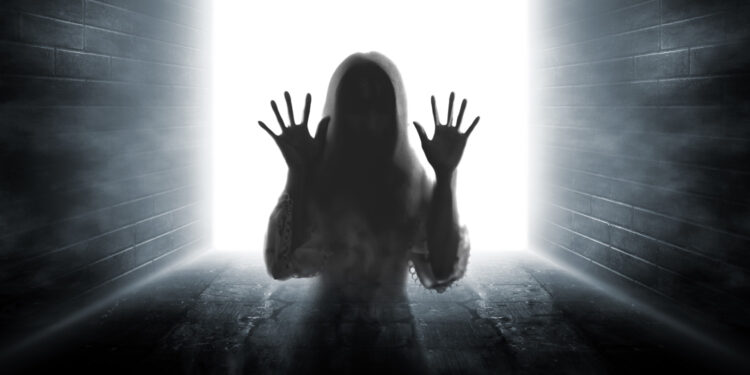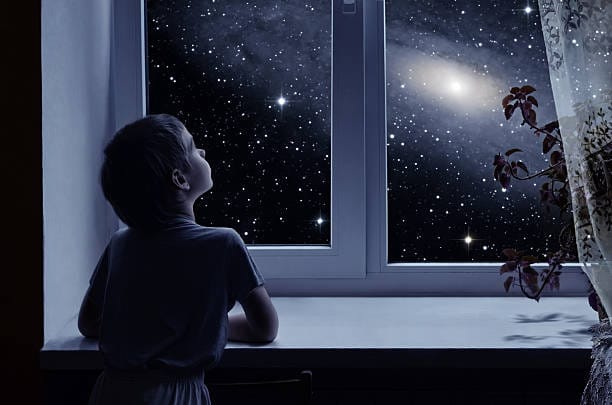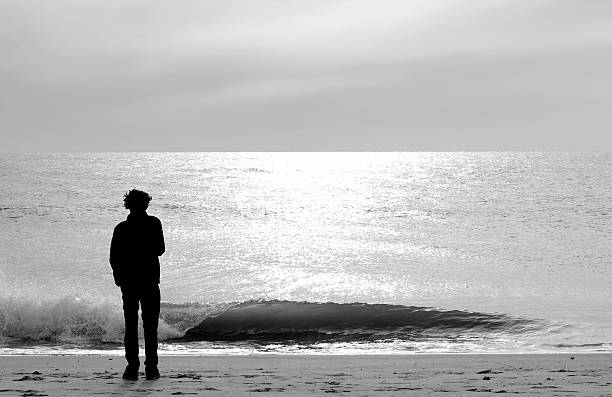Some wounds don’t bleed. They don’t bruise. They don’t leave a visible scar. But they ache just the same—sometimes louder than physical pain, sometimes forever. Rejection is one of those wounds. And unlike most pain, it doesn’t just hurt. It rewrites you.
There’s a kind of loneliness that sets in not when you’re alone, but when you feel unwanted in a room full of people. Rejection carves its initials into the soul. It etches the message: You don’t belong. You’re not enough. You’re not wanted. That message, repeated and reinforced—by parents, lovers, peers, strangers—doesn’t just stay as a memory. It seeps into identity. It forms the scaffold around which your personality is built.
And yet, we rarely talk about it.
We talk about confidence, trauma, anxiety, ambition. But rarely do we trace the root: that quiet, powerful force that shaped them all. Rejection.
To understand how people become who they are, we must first understand who they were told they couldn’t be.
The Evolutionary Echo of Being Left Behind
To the brain, rejection isn’t a metaphor. It’s a threat to survival.
In our evolutionary past, being cast out from the group often meant death. Isolation meant exposure, starvation, vulnerability. So over thousands of years, our brains learned to associate social rejection with real danger. That’s why it hurts so deeply. Brain imaging studies show that social rejection activates the same areas of the brain as physical pain. The sting is not poetic—it is literal.
A child scolded harshly. A teenager ignored by friends. A young adult ghosted by someone they loved. These events may seem small, but to the nervous system, they’re catastrophic. The subconscious brain asks: Am I safe? Will anyone protect me? Am I loveable? And if the answer is no, it adapts accordingly.
Personality is the story of how we cope. And rejection becomes a major author.
The Walls We Build: Armor of the Rejected
For some, rejection leads to walls so high no one can scale them.
They become the avoidant. The one who doesn’t need anyone. The fiercely independent person who says, “I’m fine,” even when they’re falling apart. They pride themselves on being unbothered, self-sufficient, untouchable. But beneath that armor is a soft heart that once reached for love and got burned.
Others become pleasers. Hyper-attuned to the moods and needs of everyone around them. They monitor tone, read between words, and twist themselves into knots to avoid being excluded again. They learn early that love is conditional, and so they become the best at giving others what they want, often at the cost of their own needs.
Still others become angry. Sharp. Defensive. Sarcastic. They lash out before anyone gets too close. Rejection has made them distrustful—of intimacy, of praise, of vulnerability. They’d rather push you away than risk being left behind.
These personality traits don’t appear out of nowhere. They are survival strategies. Coping mechanisms. They are attempts to prevent the unbearable: to never feel that kind of pain again.
But in avoiding the pain, they often cut off the very things they crave.
Childhood Rejection: The First Story You Tell Yourself
Rejection wounds are deepest when they arrive in childhood. At that age, we don’t have the reasoning skills to question whether rejection is fair. We don’t say, “My parent is emotionally unavailable because of their trauma.” We say, “They don’t love me. I must be unlovable.”
If a child is consistently criticized, ignored, or emotionally dismissed, they may form the belief that they are inherently flawed. Not just that they did something bad—but that they are something bad. And that belief doesn’t stay in childhood. It follows them into every relationship, every risk, every ambition.
Children who experience rejection often grow into adults who expect abandonment. They may unconsciously sabotage connections to confirm their fear. Or they may stay in unhealthy situations just to avoid repeating the pain of being cast out.
Even subtle forms of rejection—a parent who praises one sibling more, a teacher who plays favorites, a peer group that excludes—can leave lasting impressions. The child internalizes these experiences, and the narrative begins: I have to earn love. I have to be better. I have to disappear. I have to fight. That story becomes the template for the self.
And changing that template takes years, sometimes a lifetime.
Romantic Rejection: Mirrors of Our Deepest Wounds
Few things shape the adult personality more than heartbreak.
Romantic rejection doesn’t just hurt because of who we lose—it hurts because of what it awakens. Old wounds. Abandonment fears. Insecurities we thought we’d buried. When someone says, “I don’t want you,” it echoes every moment we’ve ever felt unworthy.
And rejection in love doesn’t only change how we see relationships. It changes how we see ourselves.
After a breakup or unrequited love, many people don’t say, “They weren’t right for me.” They say, “I wasn’t enough.” That message burns into identity. It makes people more anxious, more guarded, more skeptical. It alters how they flirt, how they trust, how they open up.
Some people stop trying altogether. They declare themselves unlovable and withdraw into solitude, even if they long for connection. Others chase love compulsively, trying to prove they’re worthy this time.
In both cases, the rejection becomes more than an event. It becomes a lens. A distortion. And they begin to build a personality not out of desire, but out of defense.
Peer Rejection and the Masks We Wear
Peer rejection—especially during adolescence—can shape a lifetime of behavior.
These are the years we desperately want to belong. Our identities are still forming, and so we turn to the group to tell us who we are. When that group rejects us, mocks us, or excludes us, the psychological damage can be profound.
Some respond by changing themselves completely. They shapeshift. They adopt new clothes, slang, opinions—desperate to fit in. Others rebel and declare, “I don’t need anyone,” but secretly ache for acceptance.
Many adults still carry the wounds of the lunch table they weren’t invited to sit at.
That wound shows up in workplaces, friendships, even social media. It shows up in the fear of public speaking, the avoidance of group settings, the anxiety about being judged.
And sometimes, it shows up in success. There are people who become high achievers—not out of joy, but out of a need to finally prove their worth. Their ambition is built on rejection. And no amount of applause ever feels like enough.
Cultural Rejection: The Trauma of Being “Other”
Not all rejection is personal. Some is systemic.
To be rejected because of your skin color, your gender, your disability, your religion, your sexuality—is to carry a rejection that isn’t just emotional, but existential. It tells people: You don’t belong here. You don’t matter.
This kind of rejection doesn’t only hurt the individual. It injures the psyche of entire communities. It creates hypervigilance. Exhaustion. Identity fragmentation.
Children who grow up in cultures that reject parts of who they are may internalize shame. They may split off parts of themselves to survive. They may learn to mask their truth, dilute their voice, or hate their reflection.
This shapes personality in profound ways. It affects assertiveness. Confidence. Creativity. Joy.
But there’s also something remarkable: those who survive cultural rejection often develop profound resilience. They become warriors. Artists. Leaders. Visionaries. Their pain becomes fuel.
And yet, no one should have to earn their worth through suffering.
Rejection Sensitivity: When Old Wounds Echo Loudly
For those who’ve experienced repeated rejection, a psychological trait often develops: rejection sensitivity.
This isn’t simply being emotional. It’s a hyperawareness—a radar always scanning for signs of being left out, criticized, dismissed. People with rejection sensitivity may read too much into a friend’s delayed text, a partner’s sigh, a colleague’s neutral expression. They may react intensely, withdraw prematurely, or become overly accommodating to avoid conflict.
And the tragedy? These reactions often create the very thing they fear.
Rejection sensitivity isn’t a flaw. It’s a scar. A sign of a nervous system still bracing for the pain it once couldn’t handle. But like all scars, it can be healed. With therapy. With safe relationships. With radical self-compassion.
Because you are not the child who was ignored. Not the teenager who was mocked. Not the lover who was left.
You are someone who survived.
Healing the Rejected Self
So how do we change a personality built on rejection?
First, we must tell the truth. About where the pain began. About who made us feel unwanted. About how we learned to twist ourselves into someone we’re not.
Then, we must grieve. Grieve the childhood we didn’t get. The love that wasn’t returned. The friends who didn’t stay. The moments that shaped us with silence.
After grief comes re-parenting. Not just by others—but by ourselves. We learn to give ourselves what we once begged for: acceptance, validation, belonging. We begin to say to ourselves: You are wanted. You are enough. You are not too much. You are not too little.
And slowly, the personality begins to shift—not by force, but by grace.
What was once armor becomes choice.
What was once pain becomes power.
When Rejection Becomes a Catalyst
Not all rejection is meant to break you.
Sometimes it’s the redirection you didn’t know you needed. The fire that burned away your false self. The heartbreak that opened your art. The failure that birthed your calling. The “no” that forced you to finally say “yes” to yourself.
When we heal our relationship with rejection, we stop taking it as proof of our unworthiness. We begin to see it as part of the human experience—painful, yes, but not personal.
We start to build personalities not out of protection, but out of authenticity.
We stop becoming who they wanted—and start becoming who we are.
The Other Side of Rejection
In the end, rejection will touch all of us.
You will be left. Ignored. Criticized. Unseen. Maybe by the people you love most.
But you will also survive.
Because personality is not just a reaction. It is a choice. And even if rejection helped write your early story, you can still pick up the pen.
You can rewrite what it means.
You can be soft without being weak. Open without being naive. Trusting without being blind.
You can belong to yourself, even when the world doesn’t understand you.
Because the truth is: rejection hurts the most when it hits the parts of us we haven’t yet learned to love.
So love them now.
And watch who you become.






